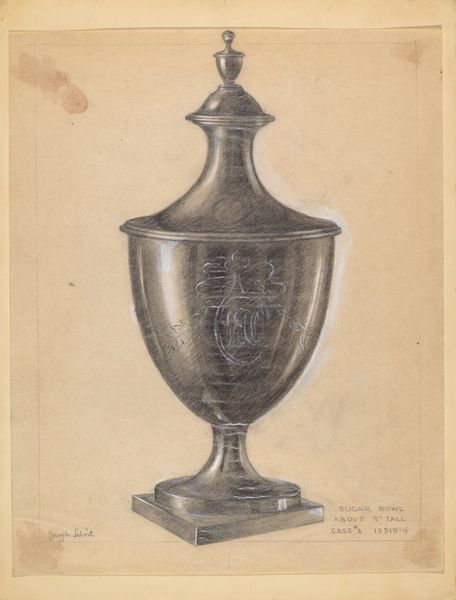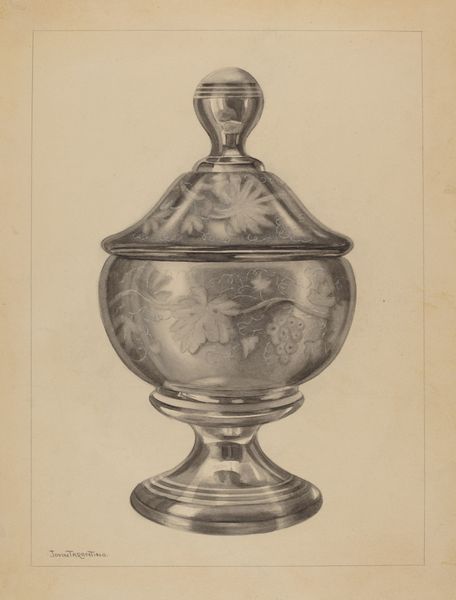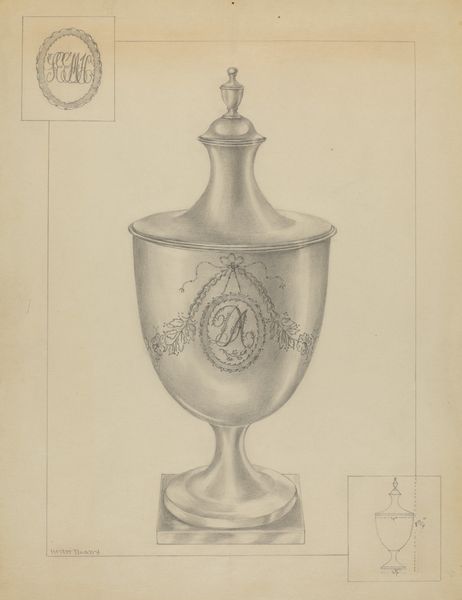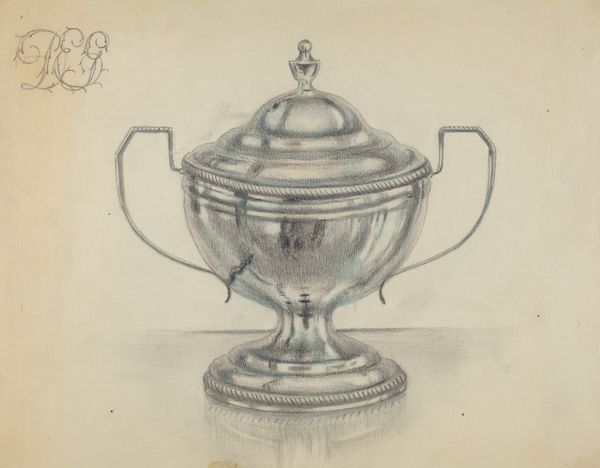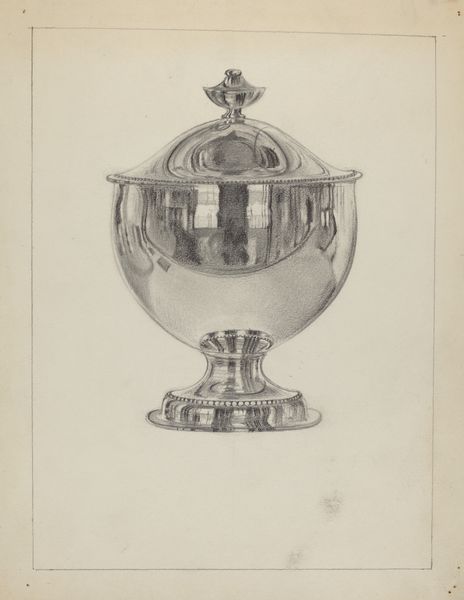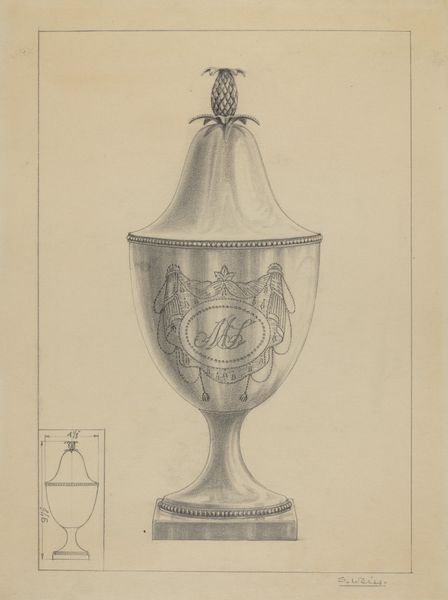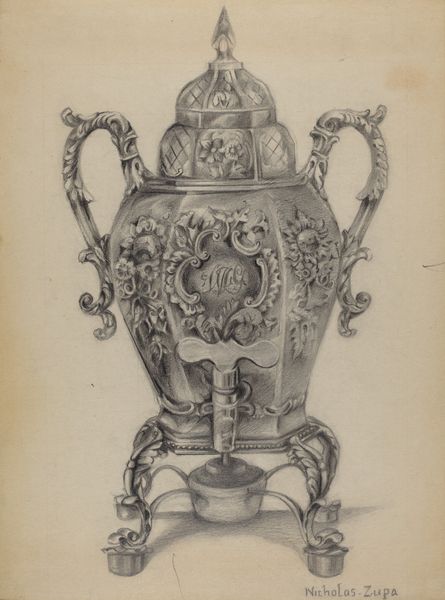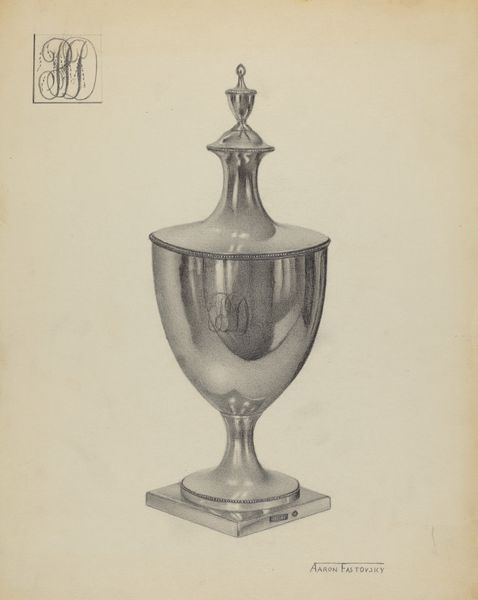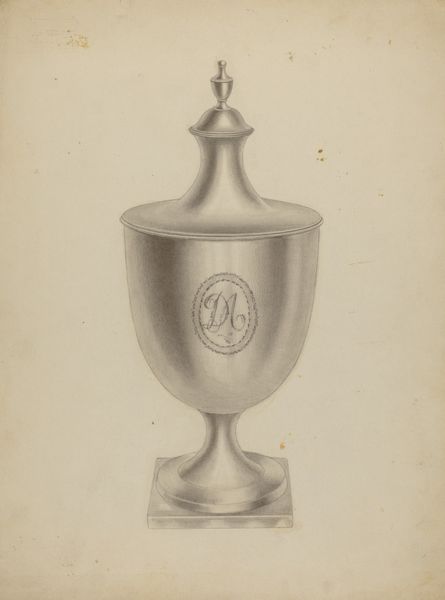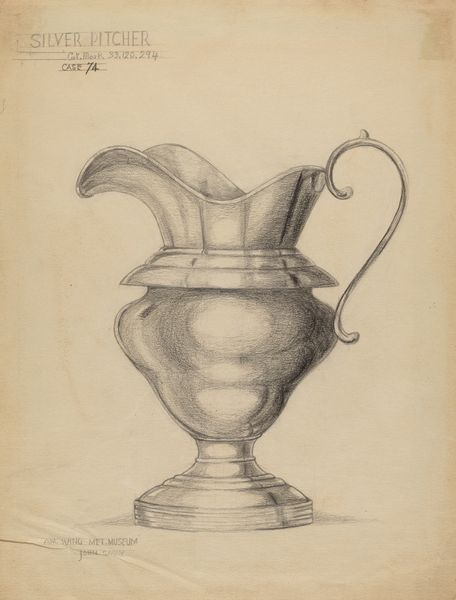
drawing, pencil
#
drawing
#
pencil drawing
#
pencil
#
decorative-art
#
realism
Dimensions: overall: 26 x 18.9 cm (10 1/4 x 7 7/16 in.)
Copyright: National Gallery of Art: CC0 1.0
Curator: So striking! The pencil rendering really emphasizes the object's graceful lines. Editor: It feels very hushed, almost monastic. All that careful shading. This isn't just a drawing; it's a devotional act of seeing, isn’t it? Curator: That's insightful. It’s titled "Silver Sugar Bowl" by Francis Law Durand, and it dates from between 1935 and 1942. Editor: A sugar bowl... I am looking at an emblem of a certain kind of domestic privilege, something both desired and perhaps, by the time of its creation, increasingly out of reach. Is it a lament, do you think? Or is it simply an observation? The decorative elements border on excess, don't you think? But they are very tastefully executed, for sure. Curator: It is difficult to see it as pure celebration with the weight of history bearing down on it! But the detail…see the ornate monogram? Someone, or some family, clearly valued this object. It also feels as if the rendering has transformed into a sacred vessel of some kind! A monument of domestic ritual. Editor: That monogram—I see layers there, almost like heraldry or a secret code. Symbols like these… they’re never just surface decoration, are they? They ripple through time. And look at the symmetry; this drawing, I believe, gives shape to inner and collective yearnings! Curator: You know, Francis Law Durand worked across several mediums, but his pencil drawings are interesting to me. Maybe in rendering mundane objects he actually wanted to celebrate form, proportion, light itself? An alchemy of perception. Editor: It becomes more precious somehow. Looking at the composition… the pedestal the bowl sits on, combined with its slightly exaggerated curves, give it a top-heavy quality, don't they? Is it solid, or is it only appearance? A bit like life, really. It captures that precariousness so well. Curator: I find myself contemplating that balance now, reflecting on the enduring presence of such objects, long after the hands that cherished them are gone. It is as though it reminds us of our collective, delicate hold. Editor: Yes! It echoes our shared history of longing and how we choose to define what's essential.
Comments
No comments
Be the first to comment and join the conversation on the ultimate creative platform.
